House mice are pests that can breed rapidly and adapt to any condition quickly. They’re small rodents capable of damaging properties and pose health threats.
What are the types of mice you’ll find in your house? The three most common types of mice you’ll find in your house are house mice, deer mice and white-footed mice.
With that said, these pests can cause significant damage to your properties, and worst, they might cause food poisoning.
In this article, we’ll discuss what attracts mice in your house and what kind of mice you have, and the diseases that they may transmit. This article will also explain ways to control and prevent a mice infestation.
Is It Common to Have Mice in Your House?
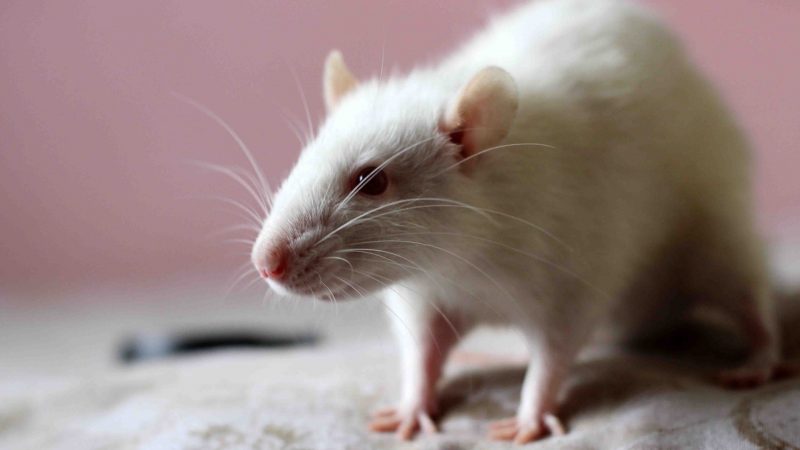
Mice are said to be one of the most common pests in the U.S. However, this doesn’t mean that it’s normal to have them in your house.
Mice are known to carry infectious diseases, affecting the humans around them. Thus, if you detect their presence in your residence, act right away.
Actively seeing mice activities in your home means there’s an infestation that you need to address quickly before things get worse. Remember, these rodents carry diseases like leptospirosis and salmonella, which should be taken seriously.
Aside from that, they can breed rapidly, which might cause severe infestation problems on your property. However, if you only notice one or two mice in your residence, you can solve this problem yourself by baiting or other methods.
If the mice problem is almost at its peak, you might want to consider calling a pest control expert to examine and treat your residence.
What Attracts Mice in Your House?
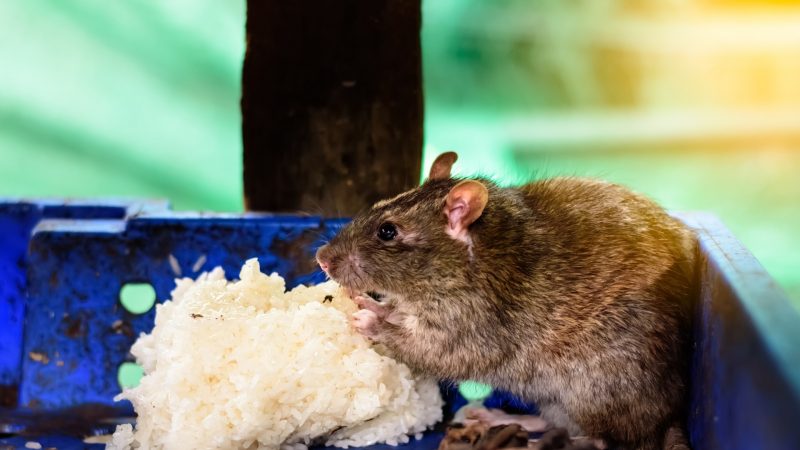
Mice are highly attracted to cluttered places with some food waste on floors and other areas. They’re particularly drawn to the following food in your house:
- Nuts
- Meat
- Grains
- Fruits
- Pet Food
- Plants
- Leftovers
Also, any mouse that will see a crack or hole that they can fit into will get attracted to enter your place. So, it’s essential to do some check-ups in your home once in a while.
In other words, if they mainly find your abode warm, cluttered, and full of food, they’ll not think twice to breed at your place and make it their home.
How Do You Know What Kind of Mice You Have?
You can identify the mice you have by looking at their physical features. A house mouse, for instance, has the following unique characteristics:
- Glittering black or pink eyes
- Long hairless tail
- Rounded ears
- Pointed nose
This mouse type has diverse colors, including white, grey, tan, brown, and black, and is about 5 inches, including its tail. On the other hand, the deer mouse has the given characteristics:
- White feet
- White underbelly
- Short tail covered with fine hairs
The deer mouse is about 7 inches inclusive of tails and has a grey or tawny brown color.
Types of Mice | Identification, Habitat, and Behavior
Cactus Mouse (Peromyscus Eremicus)
Cactus mice have an average length of 3 inches and typically live in tunnels. They can also be found in rock crevices, which are their natural habitat.
These mice are agile climbers, swift and nocturnal. They’re omnivores and feed on the following:
- Mesquite beans
- Hackberry nutlets
- Insects
- Green vegetation
- Seeds
Furthermore, they’re small in stature and are about 18 to 40 grams in weight. Males weigh lesser than females and have a smaller body, mandible, and ear length.
These mice can be identified through the following features:
- Bare soles found on their hind feet
- Almost hairless tails
- Long and soft fur
- White stomach
- Grayish sides and top of the head
- Females have paler colors than males
- Youngsters are grayer in color than their parents
The color of their fur varies from ochre to cinnamon. These mice are typically found in dry habitats in Northern Mexico and the Southwestern United States.
Their average lifespan is one year, and they’re almost entirely restricted to a desert habitat, such as cliffs and rocky lands.
California Mouse (Peromyscus californicus)
The California mouse is from the family rodent Cricetidae. This type of mouse is commonly found in Central to Southern California and Northwestern Mexico.
This mouse likes to nest on the ground and under debris like fallen logs. Its nests are typically insulated with dry and coarse grass, then topped with fine grass as bedding.
The males of this species are hostile to one another. However, they’re gentle enough when it comes to helping to raise their young. The gestation period ranges from 221 to 25 days, and weaning happens between five to six weeks of age.
California mice eat a variety of foods, including but not limited to the following:
- Seeds
- Grasses
- Fungi
- Forbs
- Arthropods
Like most mice, they’re nocturnal and forage food at night. When it comes to identification, you can quickly tell it’s them by the given features:
- Large ears
- Longer tails than their entire body length
- Brown coat mixed with black hairs
- Creamy-white belly
- White manus and feet
The average lifespan of a California mouse is two years, and its gestation period is 30 to 33 days. Meanwhile, their weaning age is five weeks.
Cotton Mouse (Peromyscus Gossypinus)
The cotton mouse has a similar appearance to the white-footed mouse. However, it’s more prominent in size, possessing more extended hind feet and skulls.
Furthermore, the cotton mice’s bodies are dark brown and possess white bellies and feet. In general, they can weigh around 34 to 51 grams and are 7.1 inches in length.
The cotton mouse is often found in the Southeastern U.S., approximately bordered by Texas, Florida, Kentucky, and Southeastern Virginia. It has a variety of habitats, such as the following:
- Scrub
- Rocky cliffs and trails
- Hardwood forests
- Swamps
- Margins of cleared fields
These mouse types usually prefer terrains typically inundated. They also use underground resources, like tree cavities, stump holes, and burrows to avoid wildfires and their predators. These underground retreats also provide the cotton mouse warmth and lower temperatures they need according to seasons.
Cotton mice are omnivorous and typically feed on seeds and insects they find. Breeding usually happens each year in early spring and fall. They can have four to seven offspring per year and are weaned 20 to 25 days after birth.
Furthermore, they’ll be sexually mature at approximately two months and have a lifespan of four to five months. It’s sporadic for this mouse species to be able to live for a year.
Their predators are usually weasels, snakes, bobcats, and owls.
Deer Mouse (Peromyscus Maniculatus)

Deer mice, also called ‘field mice,’ are named for their fur’s similar to deer fur coloration. You can quickly identify them with the following features:
- White bellies
- White legs
- Grayish-brown bodies
- Bicolored tail (dark and light bottom)
These mice can measure up to 12 to 28 cm, including their tails, and weigh up to 15 to 28 grams. At birth, they’re typically blind, hairless, and pink in color.
However, they change their color within 24 hours and weigh around one to three grams. On their third day (after birth), their ears start to unfold, and within two weeks, they’ll open their eyes.
Young are weaned at four weeks and show new fur with blue coloration, which fades as they grow older. The blue coloration completely fades when they’re ready for sexual reproduction.
These mice are known as tiny rodents closely related to white-footed mice. This is because their appearances are so similar, and it is best identified through karyotype techniques or red blood cell agglutination tests.
These mice can be distinguished physically through their long, multicolored tails, which are light and dark at the bottom. They’re typically used for lab experimentation due to their self-cared cleanliness and are easy to care for.
Like the other mice types, the deer mice are nocturnal and stay in their dens until nighttime, meaning it’s time to forage food. Females typically produce 2-4 litters by the end of their first summer, becoming sexually mature in 35 to 60 days.
Furthermore, their average lifespan is not more than 1 to 2 1/2 years. However, they can potentially live up to 8 years under favorable circumstances.
Part of the reason why deer mice can’t live that long is their predators, which are mostly:
- Hawks
- Owls
- Foxes
- Minks
- Weasels
- Snakes
- Short-tailed shrews
- Bobcats
- Coyotes
House Mouse (Mus Musculus)
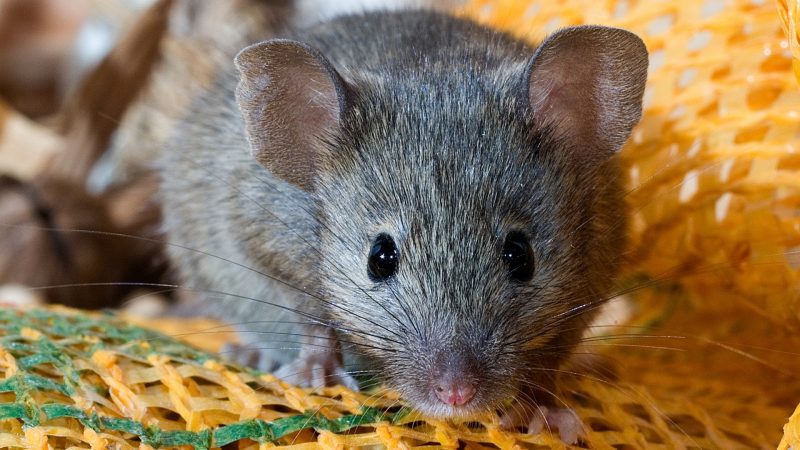
House mice are the most common mice found in homes. They pester homeowners from time to time compared to other mice types.
You can identify these mice with their distinct physical characteristics that include but are not limited to the following:
- Small rounded ears
- Pointed snout
- Body-length long, scaly tail
This mouse type typically lives in houses and fields. A house mouse can generally cause significant damage to your clothing, books, and other household things.
This species could live either alone or in groups. The females reach the breeding age, typically six weeks old, and their gestation period is about 16 to 21 days.
Meanwhile, males reach their breeding age around eight weeks old. Female house mice are capable of producing 5 to 10 litters per year.
This species has an average lifespan of 2 years and can reach up to 4 years in captivity.
White-Footed Mouse (Peromyscus Leucopus)
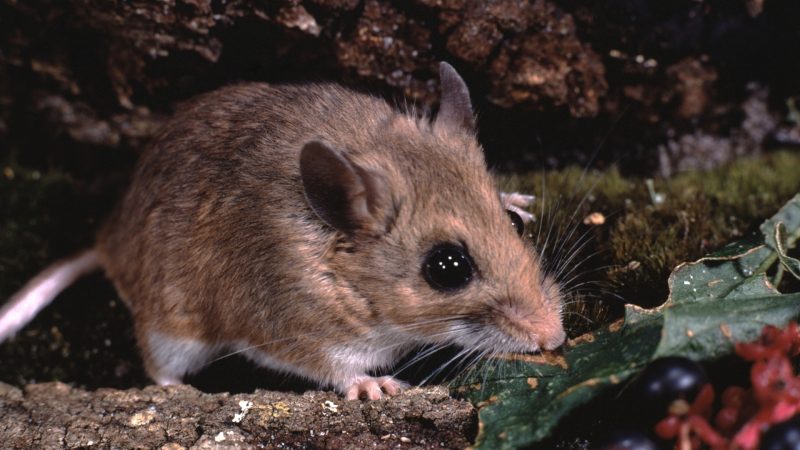
The white-footed mouse is endemic to Labrador, Quebec, and Ontario. They can also be found in the Maritime Provinces, except for Newfoundland.
The mice under this type are also commonly known as ‘wood mice’ in Texas. They’re omnivorous and nibble on seeds and insects.
Furthermore, they’re particularly timid and evade humans. However, they infrequently occupy crevices or ground-floor walls of residences, building their nests and storing their food.
You can identify them with the following physical features:
- Large pointed nose
- Black, beady eyes
- Little fur covering their large ears
- Bicolored body (brownish-reddish)
- Short, bicolored tail (dark top and light bottom) covered with fine hairs
These mice are round and slender, with body lengths ranging from 7 to 10 cm long. A young adult white-footed mouse can weigh around 20 to 30 grams and have a maximum lifespan of 96 months or eight years.
Meanwhile, their average lifespan varies based on their gender. Females typically have three years and eight months as their average lifespan; meanwhile, four years for males.
Harvest Mouse (Reithrodontomys Megalotis)
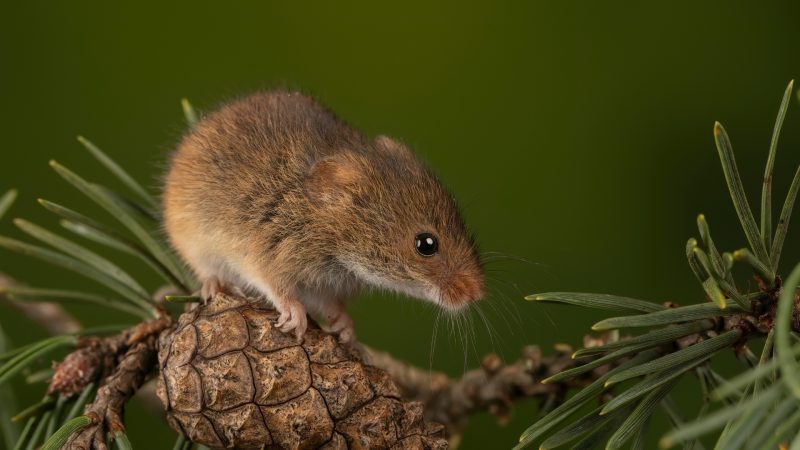
Harvest mice are typically found in the western parts of the United States. They can also be seen from Southwest British Columbia and Southeast Alberta to Northwest Indiana, and in the following:
- West Texas
- Northeast Arkansas
- Southwest Wisconsin
- Some parts of Mexico
You can identify them with the given features below:
- Long, slender, dark, and scaly tails
- Pointed muzzles
- Large ears with some hairs
- Smooth fur
- Short, dark feet
The harvest mice usually built their nest on the ground, particularly in protected areas like a bush or a fallen tree nearby. They also sometimes establish their perch above the ground during favorable weather conditions.
Their nests are made of woven grass and other plant materials, having a spherical form. These dens are usually about 13 cm in diameter and stuffed with softer materials of granular plants.
The harvest mouse typically breeds from early spring to late autumn. Its gestation period is around 23 to 24 days.
Recurred fertilization frequently happens right after giving birth. Female harvest mice can produce 10 to 14 liters per year. Newborn harvest mice weigh around 1 to 1.5 grams and have an average lifespan of 18 months or one year and six months.
Woodland Jumping Mouse (Napaeozapus Insignis)
The woodland jumping mouse can be found in North America. They’re around 8.1–10.1 inches from nose to tail tip and can jump as high as 9.8 feet high despite their small size.
Their activity peak is during the summer period, which is also when their mating season begins. During this time, they often forage for food and eat more than ever to restore their fats and body weight.
They usually start to hibernate in early September, but others wait until late November. During this period, woodland jumping mice exhaust themselves by scavenging and eating food and fats for two weeks before hibernation.
Some mice don’t hibernate and instead enter people’s houses to warm themselves and have enough food to eat. They can live within walls, cabinets, and old furniture.
A woodland jumping mouse typically eats scraps and leftover food. They also nibble the following as a part of their diet:
- Grass seeds
- Seeds from woodland fruits
- Wild berries
- Mayapple fruit
- Alder fruit and other varieties of plants
You can identify them by looking at the following physical characteristics:
- White tip tail
- Bicolored sides (yellowish or reddish-brown with some black hairs)
- Dark-tipped hairs with a dark brown dorsal band flowing from their nose to tail
- White underparts and feet
The average lifespan of this mouse species is two years. However, some of them can reach up to three to four years. The gestation period of the woodland jumping mouse is 23 to 25 days and weaned at 34 days.
Identification of House Mice Based on Their Specific Traits
| Types of Mice | Location | Weight (g) & Length (in) | Colors | Ears | Tails | Droppings | Habitat |
| Cactus Mouse | North America | 25 g 3.14-4 in | Gray to cinnamon | Large and hairless ears | 4-6 in, hairless tails | Resembles dark grains of rice | Nocturnal, Omnivores |
| California Mouse | North America | 14-15 g 8.7-11.22 in | Overall orange, mixed with black hairs | Large ears | 5-6 in | Smooth, dark brown to black with pointed ends | Nocturnal, Omnivore, Terrestrial, Altricial |
| Cotton Mouse | North America | 34-51 g 5.11 in | Brown fur with black hair at the back, grey-white belly | 0.7 in, Small, round ears | 2.6-4 in | Black, grain-like shape | Nocturnal, Omnivore, Altricial, Terrestrial, Arboreal, Solitary, Sedentary |
| Deer Mouse | North and Central America | 15-32 g 4.7-11 in | Grayish to reddish-brown, having white underparts | 0.7 in | 2.8-4 in | 0.25 in and have the size and look of grain rice | Nocturnal, Omnivore, Terrestrial, Not Migrant, Altricial, Polygyny, Solitary |
| House Mouse | Australia | 15-20 g 5-8.1 in | Light brown or gray | 0.4-0.8 in | 2.4-4 in | 0.15-0.30 in, small, pellet-shaped, and dark brown | Nocturnal, Terrestrial, Omnivore, Altricial, Polygyny, Solitary, Not Migrant |
| White-footed Mouse | North America | 20-30 g 5.5-8.4 in | Light brownish-reddish top and white underbelly | 0.6-0.8 in | 2.5-4 in | Small, dark in color with the tip | Solitary, Territorial, Nocturnal, Terrestrial, Altricial, Polygynandry, Not Migrant, Solitary |
| Harvest Mouse | North America | 9-22 g 4.3-5 in | Russet orange ginger or yellow fur | 0.3-0.4 in | 1.8-2.4 in | Small, dark brown, and shaped like rice grains | Nocturnal, Herbivore, Altricial, Terrestrial, Solitary |
| Woodland Jumping Mouse | North America | 17.35 g 8-10 in | Yellowish to reddish-brown | 0.5-0.8 in | 4.5-6.3 in | 0.3-0.6 in, smooth and dark with a tip | Solitary, Nocturnal, Burrowing, Crepuscular, Hibernating, Terrestrial, Omnivores, Altricial, Jumping, Sedentary |
What Are the Most Common Types of Mice in Your House?
The most common types of mice you can find in your house are house mice, deer mice, and white-footed mice. These mice species love to intrude on people’s houses, particularly during winter.
They can nibble almost everything in your place, such as clothing, books, leftover food, and more.
Where Do Mice Hide in a House?
Mice usually hide in crawl spaces, attics, wall voids, and garages. They also often hide beneath the appliance’s warm hollows, kitchen cabinets, and pantries, where food is abundant.
What Would You Do if You See a Mouse in Your House?
If you notice the frequent mouse activities in your house, it’s best to call a pest control expert to assess the mice situation at your place. However, if you want to go the DIY route, you can always set traps, and bait stations, or put poison pellets that they can ingest.
Nevertheless, if you have roaming pets like dogs and cats, this isn’t ideal. Thus, consider calling your local pest control professional to deal with the situation.
What Diseases Can You Get From House Mice?
You might get caught up with the following diseases if you won’t take prompt action in getting rid of house mice from your property:
- Hantavirus
- Salmonella
- Lymphocytic choriomeningitis (LCM)
You can get these diseases once you get in touch with their droppings, saliva, and dirt. The droppings and urine of house mice can also dry, turning into dust, and spreading their viruses through the air we inhale.
Control and Prevention
The best way to prevent and control mice infestation is by removing the items that attract them to your house, like water and food sources. After that, make sure to survey your exterior walls for possible holes and seal those holes up to prevent entry.
Then, always make sure that your house is clean and well-arranged to deter mice from dwelling in your house.
What’s the Quickest Way to Get Rid of Mice?
Trapping is one of the fastest ways you can get rid of mice in your abode. This method can either kill the mouse it comes in contact with.
On the other hand, this also allows you to release the trapped mouse somewhere else if you want to.
Related: Mice Control: How To Get Rid of Mice?
List of Sources
Ballenger, L. (1999). House mice – Mus musculus. University of Michigan.
Quinn, N., Baldwin, R. A., Timm, R. M. (2012). Deer Mouse. University of California.
Prevent rodent infestations. (2010). Centers for Disease Control and Prevention.
- How to Get Rid of Copperheads | Practical Guide - August 27, 2023
- How to Get Rid of Corn Snakes | What Makes Them Aggressive? - August 27, 2023
- How to Get Rid of Alligators | Safety Measures and Removal Methods - July 16, 2023
